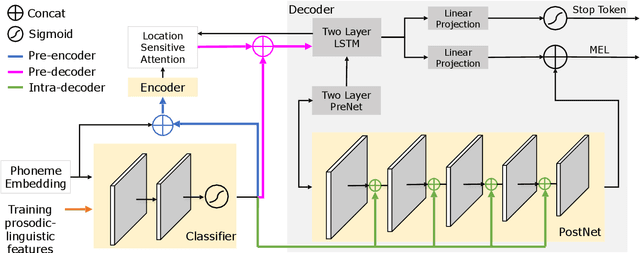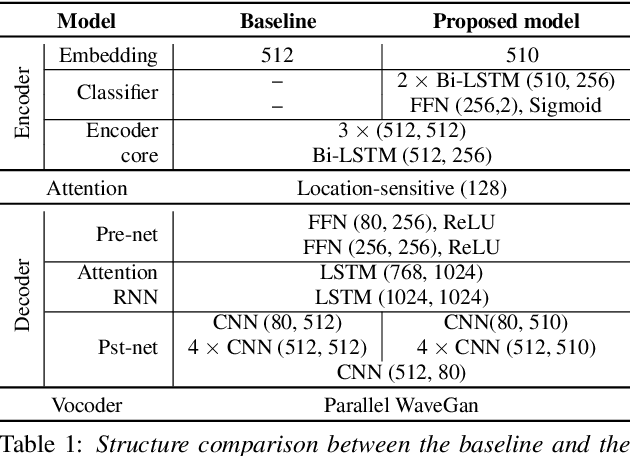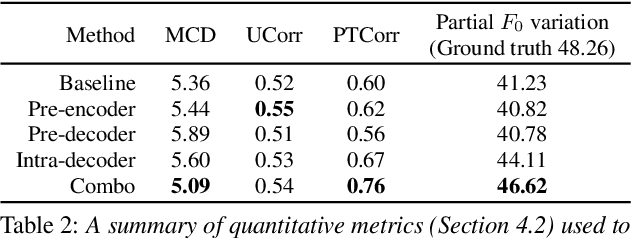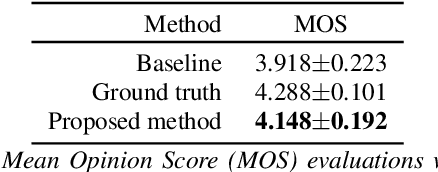Flavored Tacotron: Conditional Learning for Prosodic-linguistic Features
Paper and Code
Apr 08, 2021



Neural sequence-to-sequence text-to-speech synthesis (TTS), such as Tacotron-2, transforms text into high-quality speech. However, generating speech with natural prosody still remains a challenge. Yasuda et. al. show that unlike natural speech, Tacotron-2's encoder doesn't fully represent prosodic features (e.g. syllable stress in English) from characters, and result in flat fundamental frequency variations. In this work, we propose a novel carefully designed strategy for conditioning Tacotron-2 on two fundamental prosodic features in English -- stress syllable and pitch accent, that help achieve more natural prosody. To this end, we use of a classifier to learn these features in an end-to-end fashion, and apply feature conditioning at three parts of Tacotron-2's Text-To-Mel Spectrogram: pre-encoder, post-encoder, and intra-decoder. Further, we show that jointly conditioned features at pre-encoder and intra-decoder stages result in prosodically natural synthesized speech (vs. Tacotron-2), and allows the model to produce speech with more accurate pitch accent and stress patterns. Quantitative evaluations show that our formulation achieves higher fundamental frequency contour correlation, and lower Mel Cepstral Distortion measure between synthesized and natural speech. And subjective evaluation shows that the proposed method's Mean Opinion Score of 4.14 fairs higher than baseline Tacotron-2, 3.91, when compared against natural speech (LJSpeech corpus), 4.28.
 Add to Chrome
Add to Chrome Add to Firefox
Add to Firefox Add to Edge
Add to Edge